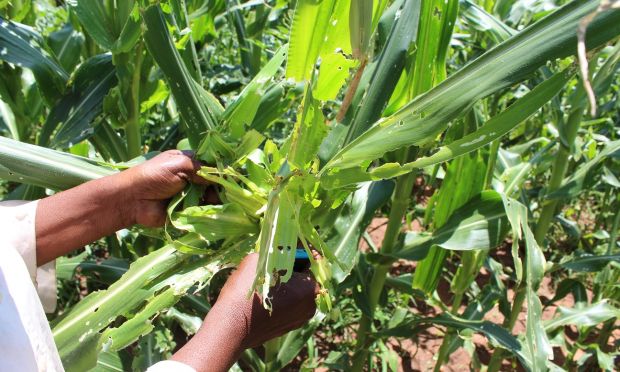…as drought, army worms ravage farms
By Wisdom JONNY-NUEKPE
Hectares of maize and other cereal cultivations in the Northern sector of the country are currently being destroyed by drought, leaving farmers scrambling for solutions to save their livelihoods.
B&FT sources indicate that arid conditions in the Northern belt are currently worse in the maize fields of the Sissala district in the Upper West and many parts of the Northern Region, where hundreds of hectares of farmland have been desiccated and destroyed by the ongoing heatwave.
Since June of this year, the state of maize farms in the Northern Region—possibly the worst in the last decade—has left many farmers shocked as they scramble to find makeshift solutions to salvage the situation.
According to stakeholders, the situation could have been improved if irrigation and mechanized farming had been prioritized as key drivers of the country’s food production agenda.
Certainly, the country has 104 central pivot irrigation systems – each covering a minimum of 40 acres. As it stands, 98 percent of these systems and facilities are non-functional.
In the last decade, the World Bank has committed more than US$200million in loans and grants to meet Ghana’s climate smart agriculture needs.
A significant portion of these funds was intended to revitalise abandoned irrigation schemes across the country, but some stakeholders believe the money has been squandered.
Indeed, an alarming US$11.9million was spent on mobilisation to kick-start construction of the US$993 million Pwalugu Multipurpose Dam… only for the project to fail.
The World Bank estimates between 360,000 and 1.9 million hectares of the country’s agricultural land could be irrigated, yet less than three percent of cultivated land in Ghana benefits from irrigation.
Middle belt emergencies
Similarly, dry weather conditions in the Bono, Bono East and Ahafo Regions have put the middle belt agriculture zone in a severe emergency.
A veterinary technologist in Atebubu in the Amantin Municipal District of the Bono East Region, Philip Kwablah Deku, told B&FT that key farming communities, including Atebubu in the Bono East Region, are currently plagued with fall army worms and black insect invasion which are feeding on crops as a result of the severe dry weather.
The situation, he said, has skyrocketed the price of key commodities in the area, including soy, maize among others.
For example, a 100kg bag of cowpea that was sold for GHc1700 in March and April this year currently sells at GH¢2800 due to destruction of crops by these insects, as farmers desire to profit from the few harvests they could salvage.
Position of Agribusiness Chamber, Ghana
These instances, according to the Chamber of Agribusiness Ghana (CAG), underscore the country’s inertia and ineptitude leading to disappointments that should not come as surprises.
CEO of CAG, Selorm Morrison, said these current happenings deepen the country’s food insecurity and will further deplete incomes of poor farming households.
He argued that it is imperative for government to set up a National Agriculture Risk Management Coordination Centre to deploy early warnings on diseases, rainfall patterns, risks and other challenges to guide farmers in cultivation.
“Making farmers aware of the dangers ahead in terms of looming heatwaves, rainfall patterns will guide in making verifiable decisions to plant or hold on until it is safe to do so. As it stands, there is no such mitigation and risk procedure by the state,” Mr. Morrison said.
The Chamber also suggested that technocrats be put in charge of agriculture management and in advisory roles, instead of politicians with little expertise in the sector.










